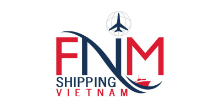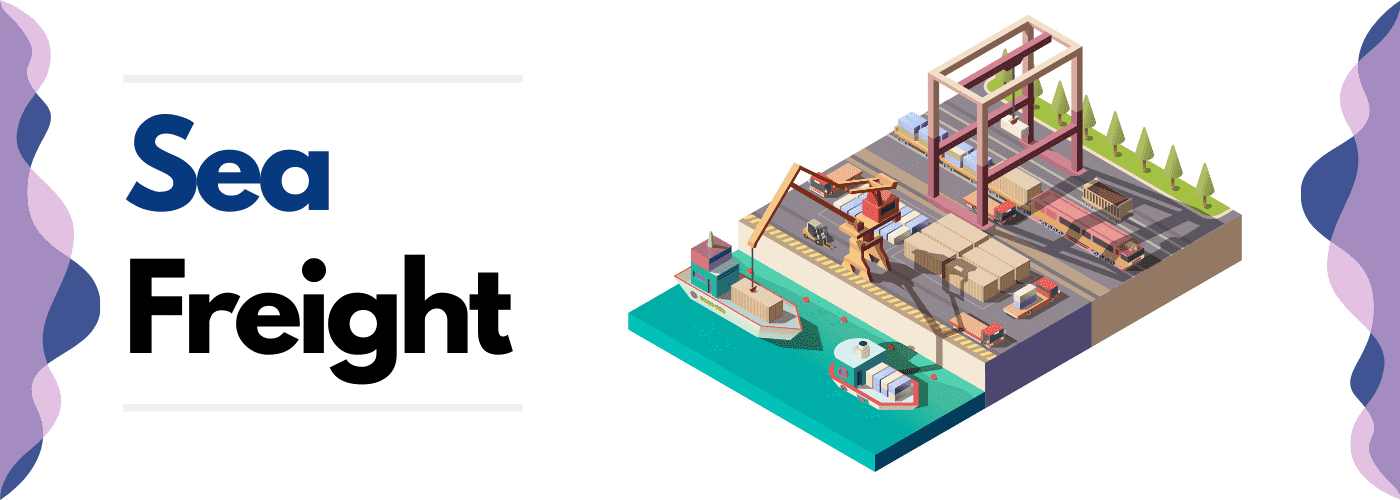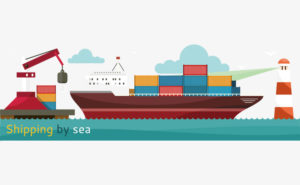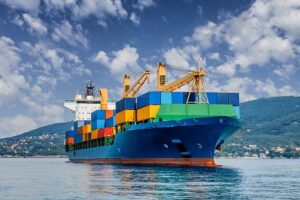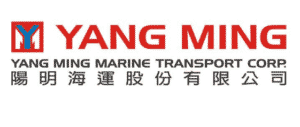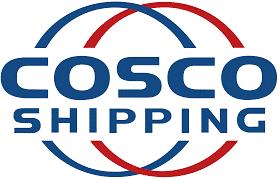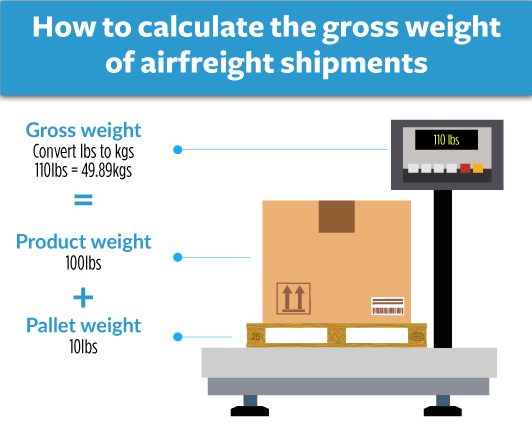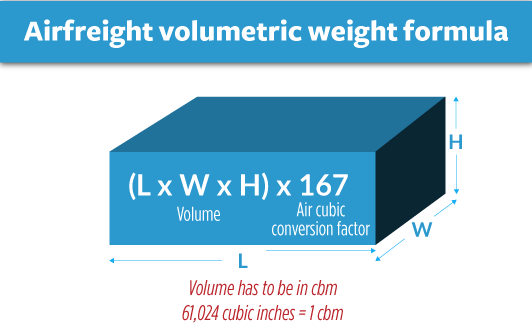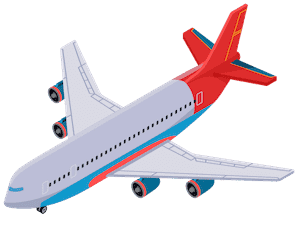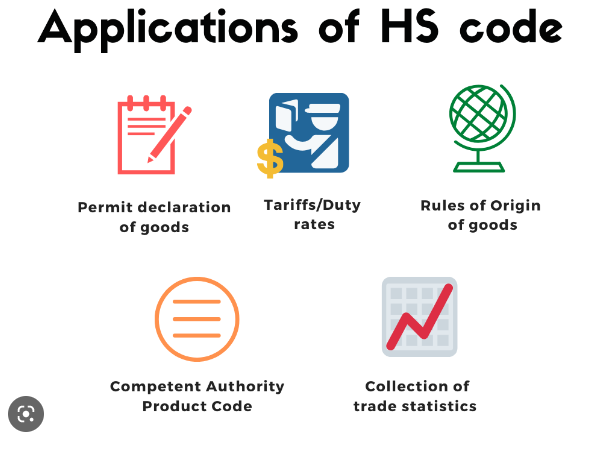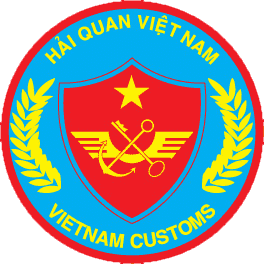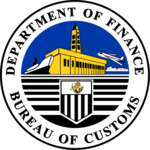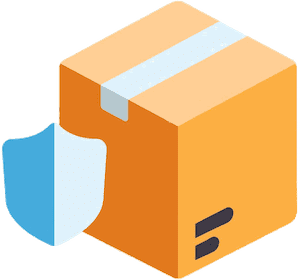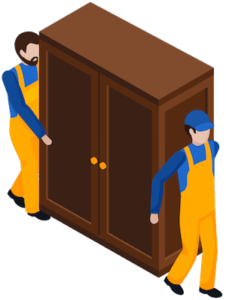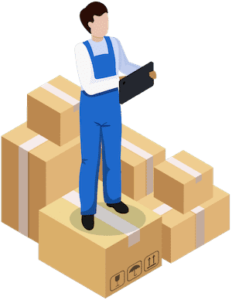The transportation of goods is a critical aspect of international trade between Vietnam and the Philippines, with various options available, including air, sea, and land transportation.
Freight rates between the two countries depend on several factors, including the type of goods being shipped, mode of transportation, and distance. For large quantities of goods, sea transportation is generally the most economical, while air transportation is faster but more expensive.
Therefore, businesses involved in international trade between Vietnam and the Philippines must evaluate their transportation options based on their specific requirements and financial limitations.
FNM Info: Get a personalized shipping plan that suits your unique requirements and budget from DocShipper. Count on us to transport your freight securely and quickly from one point to another. Contact us
Summary
What is the best method of transport between Vietnam and the Philippines?
We will see in this document that the best transport method between Vietnam and the Philippines depends on the type of goods being transported, the urgency of delivery, and the customer's budget. Sea freight is famous for bulky or heavy items, while air freight is suitable for urgent or time-sensitive shipments. Ultimately, the best method will depend on the specific needs and requirements of the customer.
Sea Freight shipping between Vietnam and the Philippines
Sea freight between Vietnam and the Philippines
Recommendation DocShipper : Sea freight will be the best option if :
- Your shipment is more than 2 CBM
- You’re not in a hurry to receive your goods
- Your goods are far from Vietnamese border
Note DocShipper : You are looking for sea freight pricing and/or advices ? Feel free to contact our experts by filling our online form.
Sea Freight shipping between Vietnam and the Philippines
We will explore sea freight shipping between Vietnam and the Philippines, including its benefits, challenges, and considerations.
As a popular and cost-effective way to transport goods between countries, this trade route is crucial in Southeast Asia, with a diverse range of products being shipped between the two nations.
Shipping companies operating between Vietnam and Philippines
Vietnam’s main seaports
Vietnam has several important seaports along its coastline, including:
- Hai Phong Port - located in northern Vietnam, is the second largest port in the country.
- Da Nang Port - located in central Vietnam, is the third largest port in the country.
- Ho Chi Minh City Port (formerly Saigon) - located in southern Vietnam, is the largest port in the country and the largest deep-water port in the Mekong Delta.
- The port of Vung Tau - located near Ho Chi Minh City, is mainly used for the export of petroleum products
- Quy Nhon Port - located in Binh Dinh Province, is one of the main ports in central Vietnam.
- Nha Trang Port - located in Khanh Hoa Province, is an important port for tourism and merchandise transportation
- The port of Cam Ranh - also located in Khanh Hoa province, is a deep-water port that is becoming increasingly important for freight transportation.
The main seaports in the Philippines
The Philippines is an archipelago country, which means it is composed of numerous islands. As such, it has several seaports that serve as gateways for international and domestic trade, as well as passenger transportation. Some of the main seaports in the Philippines are:
- Port of Manila - It is the largest and premier international shipping gateway to the country. The entrance to Manila is 19 kilometres (12 mi) wide and expands to a width of 48 kilometres (30 mi) this is the busiest and largest seaport in the Philippines. It handles a significant amount of cargo traffic and is also a popular destination for cruise ships.
- Port of Batangas -It was the second-biggest port in the Philippines in terms of revenue, just behind the Port of Manila. This seaport is located in Batangas City, south of Manila. Handling an impressive amount of vessel arrivals at 32,777 in 2015. With an annual cargo tonnage of 2,374,980 in the same year, the port serves as a critical hub for international trade and shipping. Not only that, but the port also caters to a significant amount of passenger traffic, serving over 6 million passengers in 2015.
- Port of Cebu - The port is a vital contributor to the region's economic growth, handling 9,596,102 tons of cargo annually in 2011 and facilitating international trade with an annual container volume of 181,419 in the same year. It also serves as a significant hub for passenger transportation, with over 15 million passengers in 2011.
Located in Cebu City, this seaport is the second busiest in the Philippines, handling a significant amount of containerized cargo, as well as passenger ferries and cruise ships.
- Port of Davao - This seaport is the primary gateway for shipping in the Mindanao region. In 2013, it played a crucial role in transportation and commerce, with an impressive annual cargo tonnage of 9,877,615 and an annual container volume of 544,642 TEUs. The port connected businesses and consumers worldwide, handling over 1.6 million passengers and 25,337 vessel arrivals. With advanced cargo handling capabilities and modern passenger facilities, it will continue to be a vital maritime transportation hub supporting the region's economic growth.
DocShipper is your logistics partner for all of your shipping needs, offering a comprehensive range of services from international shipping and e-commerce logistics to customs clearance.
Trust your shipping needs to the experts at DocShipper today
Should I ship my items as a groupage or a full container between Vietnam and the Philippines?
The decision to ship your items as groupage or a full container between Vietnam and the Philippines depends on various factors such as the size and weight of your items, the urgency of the shipment, and your budget. Here are some considerations that may help you make a decision:
- For numerous items, a full container may be more cost-effective due to volume/weight loads.
- Urgent shipments can benefit from group-age shipping with more frequent departures but expect longer arrival times due to consolidation with other shipments.
- If on a limited budget, group-age shipping may be more affordable as you only pay for the necessary space. However, additional fees such as consolidation and handling may apply.
- Seek guidance from a shipping expert or freight forwarder to determine the best option for your specific shipment, based on your requirements and circumstances.
Advantages of the FCL
FCL is a preferred shipping method for sea or land transportation, where a single shipper's or consignee's cargo fills the entire container, making it more cost-effective, secure, flexible, and faster than other shipment methods. FCL reduces the risk of cargo theft or damage as the container is sealed until it reaches the destination and offers greater flexibility in cargo volume, weight, and type, reducing the risk of cargo damage during loading and unloading.
Disadvantages of the FCL
Although FCL (Full Container Load) has its advantages, there are also drawbacks to consider, including higher transportation costs for small shipments, longer transit times for remote locations, storage issues, difficulty in handling mixed cargo, higher risk of cargo damage for perishable goods, and limited flexibility in delivery times.
Advantages of the LCL
LCL (Less than Container Load) is a cost-effective shipment method for small shipments that offers greater flexibility in terms of cargo volume and type, reduced inventory and transportation costs, more frequent shipping options, and greater access to global markets. In LCL, multiple shippers' cargo is consolidated into a single container, with each shipper paying only for the space their cargo occupies.
Disadvantages of LCL
While LCL has its advantages, it also has some drawbacks, including higher transportation costs for larger shipments, longer transit times, increased risk of cargo damage and theft, less control over delivery times, and limited flexibility in cargo type, including the inability to ship hazardous materials.
How much does it cost to ship from Vietnam to the Philippines
Shipping between Vietnam and the Philippines varies in cost due to several factors, such as shipping method, distance, and type of goods. This article provides an overview of these factors and an estimate of the cost of shipping.
Shipping from Vietnam to the Philippines ranges from $200 to $1,000 or more, depending on the method, distance, and goods. Air freight is quicker but costly, while sea freight is slower but cheaper. Customs clearance and insurance fees should also be considered.
You can obtain a precise quote for shipping costs from Vietnam to the Philippines by reaching out to a shipping carrier such as DocShipper They can provide you with a quote that is tailored to your specific shipping needs. While an online shipping calculator may also provide an estimate, it's best to verify with the carrier as it may not include all possible charges.
Tariff supplementation
Tariff supplementation is an additional fee that may be imposed by shipping carriers or logistics companies to cover the cost of factors such as fuel, security, customs clearance, and other operational expenses. These surcharges can vary depending on the shipping carrier, mode of transportation, and other factors.
To get an accurate estimate of the total shipping cost, it is important to check with the specific shipping carrier or logistics company you plan to use to see if any tariff surcharges or supplemental charges apply to your shipment. You can also ask for a detailed breakdown of the charges to understand exactly what you are paying for.
Special sea freight between Vietnam and the Philippines
1. Refer container
A Refer container is a type of shipping container that is temperature-controlled, also known as a refrigerated container. It is used to transport goods that require a specific temperature range to maintain their quality and freshness during transportation, such as perishable food items, pharmaceuticals, or other temperature-sensitive products.
The temperature in a Refer container can be adjusted and maintained to a precise range, typically between -25 to +25 degrees Celsius, to ensure that the cargo arrives at its destination in the same condition as it was loaded.
2. RoRo
RoRo is a shipping technique where cargo and vehicles are driven onto and off ships using ramps and doors on the vessel's side or stern. This method is ideal for transporting heavy machinery, trucks, trailers, buses, and other cargo that can be rolled or towed onto the ship. RoRo shipping is known for being fast and efficient as it minimizes loading and unloading times while securely transporting the cargo during transit.
3. Bulk
Loose and unpackaged, bulk cargo is shovelled or poured into vehicles for transportation, including grains, coal, minerals, chemicals, and liquids. It is an economical choice for long-distance transportation of large quantities of uniform goods that are difficult to package individually.
4. OOG
OOG, which stands for "Out Of Gauge," refers to cargo that is larger than the standard size or weight restrictions for a specific mode of transportation, such as shipping containers or flat racks. Oversized machinery, vehicles, and other goods that require special handling and transportation arrangements fall under OOG cargo.
Transporting OOG cargo necessitates additional safety measures, permits, and specialized equipment, making it a more expensive option than regular cargo.
If you're considering importing products, don't hesitate to reach out to our team of knowledgeable DocShipper experts. We will provide guidance and support throughout the entire process.
Contact us to receive a free estimate in less than 24 hours.
Do you have a question? Call our consultants for free.
Recommendation DocShipper : Air freight will be the best option if :
- Your shipment is less than 2 CBM
- You’re in a hurry to receive your goods
Note DocShipper : You are looking for air freight pricing and/or advices ? Feel free to contact our experts by filling our online form.
What is the best method of transport between Vietnam and the Philippines?
We will see in this document that the best transport method between Vietnam and the Philippines depends on the type of goods being transported, the urgency of delivery, and the customer's budget. Sea freight is famous for bulky or heavy items, while air freight is suitable for urgent or time-sensitive shipments. Ultimately, the best method will depend on the specific needs and requirements of the customer.
Air Freight shipping between Vietnam and the Philippines
To transport goods quickly and efficiently between Vietnam and the Philippines, air freight is a popular choice among businesses and individuals. With various airlines available for this route, air freight is a reliable option for secure transportation. However, it is crucial to take into account factors such as customs regulations, documentation, and packaging requirements to ensure a hassle-free shipping experience.
The air freight companies
Some of the cargo airlines operating between Vietnam and Singapore are Vietnam Airlines Cargo, Singapore Airlines Cargo, Cathay Pacific Cargo, Korean Air Cargo, and Emirates Sky Cargo. Freight rates may vary depending on the size, weight and nature of the goods shipped, as well as the time of year and demand.
It is important to plan and ensure all necessary documentation is in place before shipping to avoid potential delays or issues.
The different types of freight
A variety of freight options are accessible for shipping from Vietnam to the Philippines. The frequently utilized freight options comprise:
- Air Freight is the quickest transportation option, often used for time-sensitive or high-value goods, although it can be more expensive.
- Sea Freight is a cost-effective option for shipping large volumes of goods between Vietnam and the Philippines. FCL and LCL are two types of sea freight available.
- Road Freight is suitable for domestic shipments or for transporting smaller volumes of goods over short distances.
- Rail Freight is not commonly used for shipping between Vietnam and the Philippines but can be useful for domestic or cross-border shipments in countries with well-developed rail infrastructure.
The decision to choose a freight option depends on several factors, such as the goods, timeline, and budget. It is crucial to work with an experienced shipping provider to determine the best option for your
Conventional freight
Conventional freight refers to the traditional method of shipping goods using standard shipping containers or packaging methods. It involves using standard pallets, boxes, or crates to transport goods and is typically loaded onto ships, planes, or trucks for transportation. Conventional freight is often used for larger or heavier items, as well as for goods that do not require specialized handling or temperature control. This method of shipping can be cost-effective and efficient for moving large volumes of goods over long distances.
Express air freight
Express air freight is a dependable and speedy shipping option for time-sensitive shipments between Vietnam and the Philippines. Despite being pricier than sea or road freight, it delivers goods faster and is appropriate for urgent or high-value items. It's crucial to collaborate with a competent and dependable shipping provider and present all essential customs clearance documents.
Express air freight is an optimal choice when prompt delivery and dependability are critical.
Advantages of air freight
There are several advantages to using air freight as a mode of transportation for shipping goods, including:
Speed: Air freight is the fastest mode of transportation available and is ideal for time-sensitive shipments. It can significantly reduce shipping times and ensure that goods arrive at their destination quickly.
Reliability: Air freight services are generally more reliable than other modes of transportation, as they are less affected by weather conditions or road congestion. This makes air freight an ideal choice for high-value or time-sensitive shipments.
Global reach: Air freight services operate on a global scale and can transport goods to almost any destination in the world. This makes it an ideal choice for businesses that need to ship goods internationally.
Increased security: Air freight is subject to strict security measures and procedures, which helps to ensure the safe transportation of goods.
Reduced handling: Air freight involves less handling than other modes of transportation, such as sea or road freight. This reduces the risk of damage to goods during transit and can help to lower insurance costs.
Overall, air freight can offer significant advantages over other modes of transportation, particularly for businesses that require fast and reliable shipping services. However, it is important to consider the higher cost of air freight and weigh it against the benefits to determine if it is the best choice for your specific shipping
How much does it cost, to air freight from Vietnam to the Philippines?
The cost of air freight between Vietnam and the Philippines varies depending on factors such as weight, dimensions, type of goods, and the chosen airline. Air freight rates are typically based on the chargeable weight, which is either the actual or volumetric weight, whichever is greater.
To obtain an accurate cost estimate, it is advisable to consult a reliable shipping provider or freight forwarder who can provide a customized quote that considers all shipping requirements, including any additional fees for customs clearance or insurance.
How to calculate the volumetric weight of your shipment
To calculate the volumetric weight of your package, measure its length, width, and height in centimetres, and multiply them together to get the total cubic centimetres. Divide this by the volumetric factor (usually 5000 for air freight or 6000 for sea freight) to get the volumetric weight in kilograms.
For example, a package measuring 60 cm x 40 cm x 30 cm would have a volumetric weight of 14.4 kg if shipped by air.
It's important to note that shipping providers may use different volumetric factors or rounding methods, so it's always best to confirm the specific calculation method with your shipping provider to ensure accurate weight and cost calculations.
Docshipper Tip: When it comes to international trade from Vietnam, ocean freight is the most popular method of shipping due to its cost-effectiveness for long-distance and high-volume transportation, as compared to air or rail freight. In case you have any doubts or questions, do not hesitate to ask our experts for advice.
Customs clearance in Vietnam for goods imported from the Philippines
Customs clearance is an important process for goods imported from the Philippines into Vietnam. The customs clearance process involves the verification and assessment of goods by the Vietnam customs authorities to ensure that they comply with all legal and regulatory requirements for importation.
When clearing goods through customs in Vietnam, submitting necessary documents including a commercial invoice, bill of lading, packing list, certificates, and permits is mandatory. In addition, physical inspections may be carried out to ensure compliance with regulations, such as product standards and safety requirements.
To avoid penalties and navigate the complex and time-consuming process, it is advised to seek the assistance of a reliable customs broker or freight forwarder who can help with compliance and minimize delays.
What are the customs duties and taxes?
The tariffs and taxes charged on imports and exports between Vietnam and the Philippines are influenced by factors like the type of goods and trade agreements such as the ASEAN Free Trade Area and the ASEAN Trade in Goods Agreement. Although certain goods can be imported without tariffs, others may be subject to duties, especially sensitive industries or those that need protection. The amount charged depends on the goods and their value. To determine the exact duties and taxes and ensure compliance with regulations, it's recommended to consult a reliable customs broker or freight forwarder.
FNM Alert : A wrong route will waste time and additional costs. For advice on the best route for you and your cargo, based on your needs, request a free quote here.
Door-to-door shipping from Vietnam to the Philippines
Want the best peace of mind? Take the door-to-door service. Therefore, we take care of the whole process. We will pick up your shipments in Vietnam (with Packing/ Loading if necessary) and make the delivery in the Philippines (with Unloading/ Unpacking if necessary).
This comfort provided is appreciated by our customers. Also, note that we are responsible for each phase of the transfer.
How are door-to-door services useful?
From A to Z ensures the fluidity of your transfer. Indeed, our employees in Vietnam and the Philippines will cooperate to avoid any delays or additional costs due to communication errors between all entities responsible for your freight. Thus, for example, customs clearance will be entirely under control, thanks to the competence of our collaborators with the customs of the Philippines and Vietnam.
DoShipper tip : DocShipper offers assistance with international transportation. Whether the shipment is carried out by Sea freight or Air freight. Contact us to receive a free shipping quote in less than 24h.
How do you get your HS code?
HS (Harmonized System) codes are used to classify goods for import and export purposes. The HS code is an internationally recognized code that is used to determine customs duties and taxes, as well as to provide statistics on trade flows between countries.
To determine the HS code for your goods, you can follow these steps:
1. Determine the product category: The HS code is organized by product category, with each category having a unique code. Identify the category that your product belongs to, based on its function and characteristics.
2. Identify the subcategory: Within each product category, some subcategories provide more specific details about the product. Identify the subcategory that best describes your product.
3. Use an online HS code lookup tool: There are many online HS code lookup tools available, including those provided by government agencies and trade organizations. Use these tools to search for the appropriate HS code based on your product category and subcategory
4. Consult with an expert: If you are unsure about the correct HS code for your product, or if it falls into a complex or specialized category, it is recommended to consult with an expert, such as a customs broker or freight forwarder, who can help you identify the correct HS code.
It is important to use the correct HS code when importing or exporting goods, as incorrect classification can lead to delays, penalties, or even seizure of the goods.
Calculating customs duties with the HS code
The HS code assigned to a product determines its customs duties, based on a standardized method for identifying the product and its corresponding tariffs and taxes.
To calculate customs duties using the HS code, find the code and its corresponding customs duty rate in the importing country's tariff schedule, and multiply the rate by the value of the goods. Other taxes and fees may also apply, and consulting with a reputable customs broker or freight forwarder can help ensure compliance and accurate calculations.
How to calculate customs duties and taxes
When importing goods into a country, calculating customs duties usually involves finding the HS code for your product, determining the applicable customs duty rate in the customs tariff schedule, and multiplying it by the value of the goods.
In addition, there may be other taxes and fees to consider. To ensure compliance with regulations and accurately calculate duties and taxes, it is advisable to seek assistance from a customs broker or freight forwarder.
Does DocShipper charge duty?
DocShipper Group is highly skilled in overseeing every aspect of the logistics process, including Door-to-Door relocation services. Our comprehensive services include packing, pick up at your location, export procedures, worldwide transportation, customs clearance, and final delivery.
With our extensive partner network around the world and a team of experienced professionals, we ensure a safe and seamless transition from your old to your new home. Our customers benefit from the expertise of our team, no matter where they are or where they are going. We are committed to providing support throughout the entire process, from start to finish
Contact Vietnamese customs
Official name: General Department of Vietnamese Customs
Website: Vietnamese Customs
Contact the Philippine customs
Official name: Department of Finance: Bureau of Customs
Website: Philippine Customs
Required documents
The following documents may be required for customs clearance and to calculate customs duty:
- A commercial invoice - is a document that provides a detailed description of the goods, including their value, quantity, and country of origin.
- Bill of lading or airway bill - a document that serves as a contract between the shipper and the carrier for the transportation of the goods.
- Packing list - a document that provides details about the contents of each package, including the weight and dimensions of each item.
- Certificate of origin - a document that certifies the country in which the goods were produced or manufactured.
- Import licence or permit - a document required in some countries for certain types of goods.
It is important to check with the customs authority of the destination country or consult with a customs broker or freight forwarder for specific document requirements
DocShipper Tip :We provide total supply chain coverage with our 3PL service . We handle worldwide logistics, quality assurance, and compliance. Get in touch with us for further details!
Get started today and streamline your supply chain with Docshipper's reliable logistics and sourcing solutions.
Our complementary services
Storage
DocShipper warehouses are well located to store your products until you are ready to export them. Whether you are combining your products with those of other suppliers, filling a container to the brim, or already have a full container but want to split it at the destination port for distribution elsewhere, we can also offer you a container optimization approach.
For more information, visit our Warehousing Services page.
Packaging and reconditioning
If you want to ensure that your items will be solid throughout delivery and will benefit from the best protection during storage, you should not skip the packing and preparation step. We offer a wide range of products, including pallets, cartons, boxes, adhesive tape and bubble wrap. We invite you to browse our website at your convenience.
To learn more, please visit our dedicated page: Packaging services
Transportation insurance
The cost of insurance varies depending on the make of the car, the way the product is manufactured and the insurance provider. Regardless of the material, the pronounced value can be increased up to 20% to account for possible damage. The value of the object and the first transport costs will be indicated by the lawyer.
To learn more, please visit our dedicated page: Cargo Insurance
Moving and shipping of personal effects
The cost of insurance varies depending on the make of the car, how it is made and the insurance company. The pronounced value can be adjusted up to 20% to account for potential damage, regardless of the material. The lawyer will specify the value of the object and the first transportation costs.
To learn more, please visit our dedicated page: Moving services
Supply chain management in Vietnam
Our aim is, as mentioned above, to avoid any kind of disturbance during the operation. Thus, we will contact your supplier in order to check your products (their condition and especially their packaging). Letting go of your badly packed goods is to cause you problems and to cause us problems.
We will therefore make sure of a perfect packaging and the state of your products.
Know that by trusting Docshipper, the cargo will be fluid from start to finish. The incoterm can be FOB, CFR or other, whatever happens, the type, dimensions and HS code will be checked by our staff. They have a perfect command of Vietnamese as well as French and English. Documentation, packaging and the rest will be our problem and not yours.
To learn more, please visit our dedicated page: Sourcing services
FAQ | Freight from Vietnam to the Philippines: the complete guide
What will be the cheapest way to transport my goods between Vietnam and the Philippines?
The cheapest way to transport your goods between Vietnam and the Philippines will depend on several factors, such as the type of goods, their weight and volume, the required transit time, and the distance between the origin and destination. In general, sea freight is often the most cost-effective option for transporting large volumes of goods over long distances.
What is the difference between LTL and FTL trucking?
LTL and FTL are distinct trucking services based on the amount of freight transported. LTL accommodates smaller shipments that don't fill the whole truck, enabling multiple shippers to share space and save costs. Conversely, FTL is reserved for larger shipments that require the entire truck capacity.
The shipping cost depends on the space and weight occupied by the shipment.
At what point does air freight become more attractive than sea freight ?
When deciding between air and sea freight, several factors should be taken into account, such as cost, transit time, type of goods, destination, and urgency. Air freight is quicker but more expensive, making it ideal for time-sensitive or valuable items, while sea freight is slower but cheaper, making it a better option for bulky goods.
The threshold for selecting air or sea freight depends on the unique needs of the shipment. Combining air and sea freight, such as using air for the first leg and sea for the remainder, can balance cost and speed.
Can FNM, Vietnam consolidate my goods from different suppliers?
FNM Vietnam provides consolidation services to gather and combine goods from different suppliers in Vietnam for transportation to your destination. These services are advantageous for small or medium-sized businesses that import from various suppliers because they can decrease transportation expenses and simplify logistics. Depending on the shipment size and volume, FNM Vietnam offers a range of consolidation options, including LCL and FCL.
They manage all facets of the logistics process, such as pickup, warehousing, packing, documentation, and customs clearance, to ensure smooth and prompt delivery of your goods. It's recommended that you discuss your business's specific requirements with FNM Vietnam to determine the most suitable consolidation services.
DocShipper info: Did you like this article? You may also like the following:
DocShipper Advice : We help you with the entire sourcing process so don't hesitate to contact us if you have any questions !
- Having trouble finding the appropriate product? Enjoy our sourcing services, we directly find the right suppliers for you!
- You don't trust your supplier? Ask our experts to do quality control to guarantee the condition of your goods!
- Do you need help with the logistics? Our international freight department supports you with door to door services!
- You don't want to handle distribution? Our 3PL department will handle the storage, order fulfillment, and last-mile delivery!
DocShipper | Your dedicated freight forwarder in Vietnam !
Due to our attractive pricing, many customers trust our services and we thanks them. Stop overpaying the services and save money with our tailored package matching will all type of shipment, from small volume to full container, let us find the best and cost-effective solution.
Communication is important, which is why we strive to discuss in the most suitable way for you!
